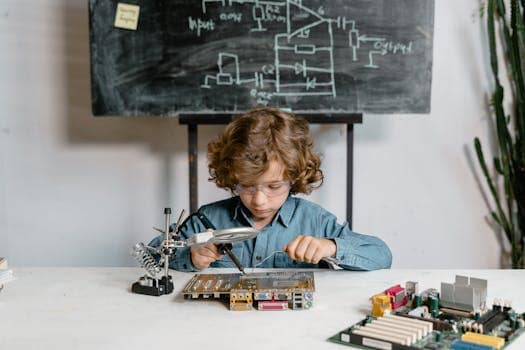Educational Robotics: Hands-On STEM Learning
Educational robotics is a rapidly growing field that has captured the attention of educators, students, and parents alike. With the rise of technology in today’s society, it is becoming increasingly important to equip our children with the necessary skills to thrive in a digital world. This is where educational robotics comes in – a hands-on approach to STEM (science, technology, engineering, and mathematics) learning that combines the principles of robotics, coding, and engineering to create an engaging and interactive educational experience.
The Importance of STEM Education
In recent years, there has been a growing emphasis on STEM education in schools, with a focus on integrating these subjects into the curriculum from a young age. This is due to the recognition that these fields are essential for future careers and play a significant role in driving innovation and economic growth. However, traditional methods of teaching these subjects often fall short in engaging students and promoting critical thinking and problem-solving skills. This is where educational robotics shines.
What is Educational Robotics?
Educational robotics is a hands-on approach to learning that involves the design, construction, and programming of robots. It allows students to apply the principles of science, technology, engineering, and mathematics in a creative and practical way. By using coding languages such as Scratch or Python, students can control robots to perform various tasks, giving them a tangible and interactive learning experience.
Benefits of Hands-On Learning
Hands-on learning has been proven to be one of the most effective teaching methods, especially for complex subjects like STEM. It allows students to get actively involved in the learning process, promoting better understanding and retention of information. With educational robotics, students can see firsthand how the concepts they have learned in the classroom are applied in real-life scenarios, making the learning experience more engaging and relevant.
Furthermore, hands-on learning encourages students to think outside the box and develop critical thinking and problem-solving skills. When faced with a challenging task, students are forced to come up with innovative solutions, promoting creativity and adaptability – two essential skills for success in the future workforce.
Engaging and Inclusive Learning Environment
For many students, traditional STEM subjects can be intimidating and uninteresting. However, educational robotics offers a fun and interactive way for students of all ages and abilities to learn these subjects. With the use of robots, students are more likely to remain engaged and motivated, resulting in a positive learning environment.
Moreover, educational robotics promotes inclusivity by breaking down gender stereotypes and encouraging more girls to participate in STEM education. This is crucial in addressing the gender imbalance in STEM fields and creating more diverse and well-rounded teams in the future.
Integrating Educational Robotics into Education
Educational robotics can be incorporated into various educational settings, from elementary schools to universities. Many schools now offer robotics clubs, classes, and competitions to introduce students to the world of robotics. Some even have dedicated robotics labs equipped with the latest technology to facilitate STEM learning. Additionally, online resources such as coding platforms and video tutorials make it possible for students to continue learning at home.
As the demand for STEM skills continues to rise, it is crucial for educators to make use of educational robotics to enhance the teaching and learning experience. By doing so, we can equip our students with the necessary skills to excel in the ever-evolving digital landscape.
Final Thoughts
Educational robotics offers a hands-on and interactive approach to STEM learning, making it an effective tool for teaching complex concepts and promoting critical thinking and problem-solving skills. By integrating educational robotics into education, we can create a more engaging and inclusive learning environment and prepare our students for the future ahead.
Whether it is through building and coding robots or participating in competitions, educational robotics is a fun and engaging way for students to learn and develop essential skills for success in the 21st century. So let us embrace the world of educational robotics and ignite a love for learning in our students!








